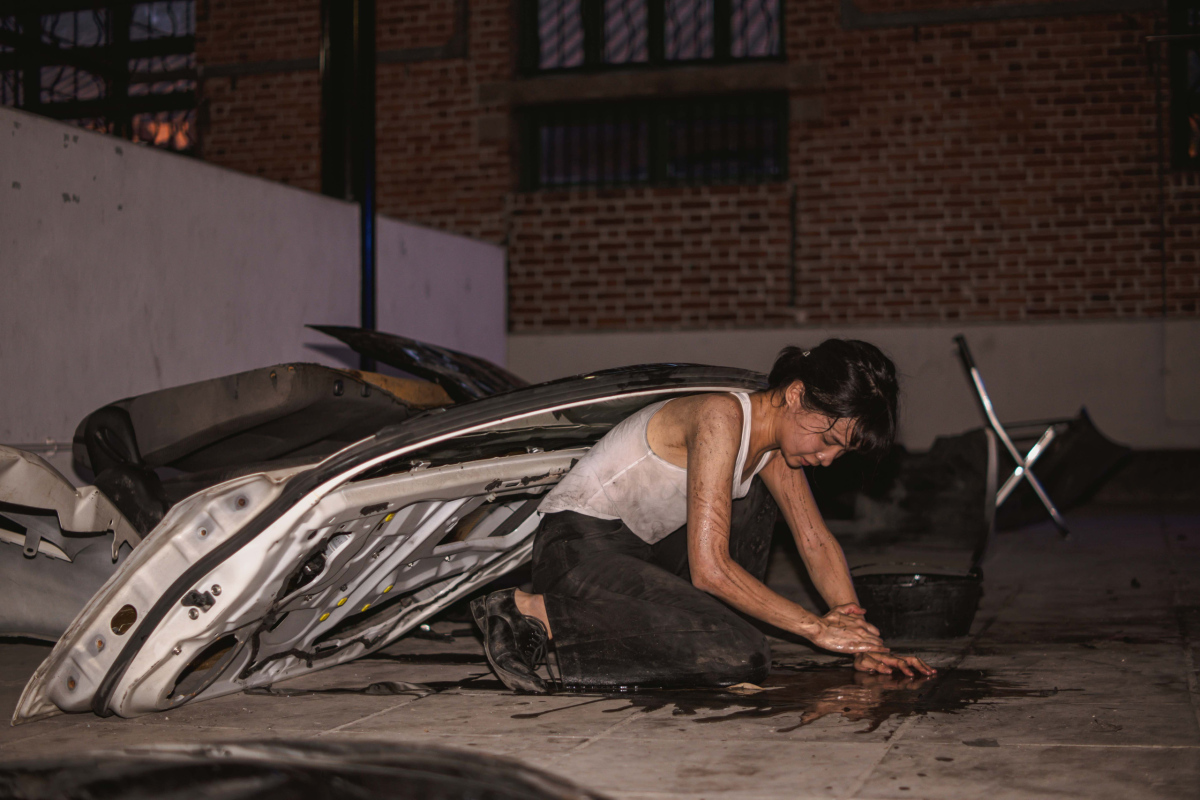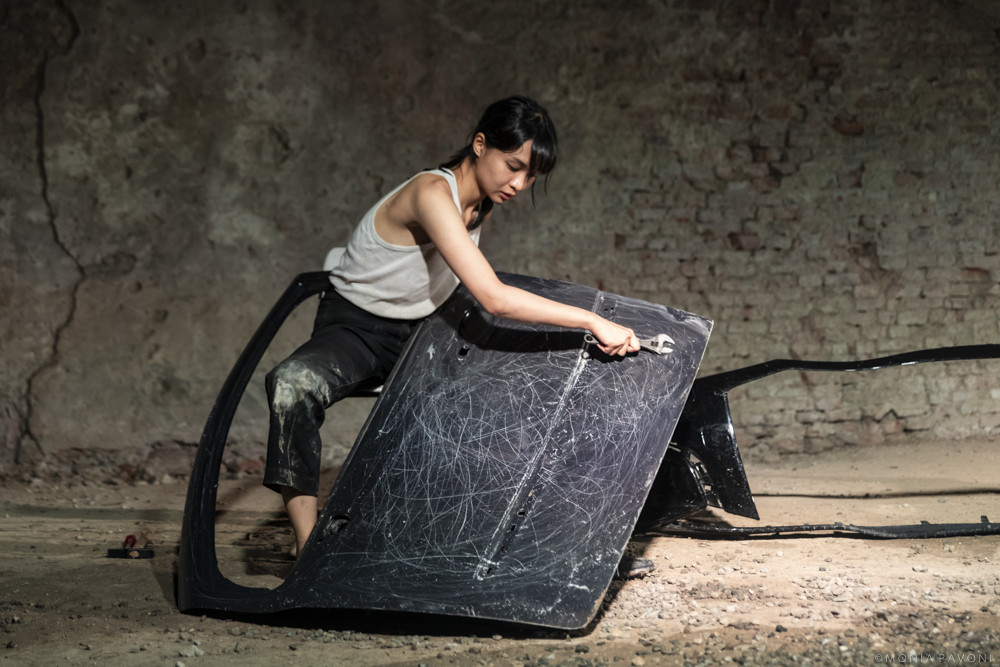-
疒, 2021
時間:31/8 13:00 - 1/9 03:45
地點:土瓜環牛棚藝術村12號「疒」,讀「匿」或「藏」。甲骨文從「人」從「爿」,再加幾點。「爿」是牀的象形初文,加上的幾點像汗水,意味著人生病,躺在牀上,身上流汗。「疒」是「疾」的初文,本義是疾病。此文字部首延伸到痛、疲、疤痕、瘀、瘋癲和療癒等意味。
《疒》是一個無限期,但起碼會維持兩日一夜的長時間的現場行為藝術作品。藝術家 Florence Lam 會在一塊汽車的殘骸廢鐵上刻劃,模仿遠古時代人類在洞穴裡刻畫壁畫的行為,劃花汽車表面意味著破壞、情緒釋放、與民眾溝通和塗鴉的意境,試圖將現今文明用原始的方法留下,與未來的時空接通。
後人類是什麼意思?人類是什麼意思?沒有文明,沒有歷史,沒有對過去的記憶和對未來的渴望,「人」還是「人」嗎?人類之後又是什麼?
在擔任兒童繪畫工作室的教師期間,Florence從孩童創作的痕跡中獲得靈感,這些最初的動作包含了兒童對身體運作的探索、對觸覺感知的試驗、手握和控制畫具的能力訓練、利用素材和繪畫表面等玩游戲的本能,顯示了兒童對人或物件理解和表現的認知發展。這是學習的第一步,也是人類最原始的藝術呈現。Florence嘗試將刻畫標記的原始行為,與「行為」本身具多層次含義的可能性聯系起來。通過刮花在汽車殘骸的表面,無論是具破壞性的行為或是創造壁畫的歷史性行為,探索公共擁有權和道德的概念,具有削減與增加一個物體的價值,甚至是人類的價值的雙重可能性。這種行為或被去掉了語境,又再被語境化,重新成為一種具有藝術價值的行為。
藝術,就像詩詞,是為了創造「美」。行為藝術是一種現場的形象創造,是某種精神狀態,與材料、空間和時間直接接觸的呈現。在涂鴉文化中,「天堂點」(”Heaven Spot” 此作品的英文標題)指的是那些高度危險的地點,這些地方通常位置都非常高,如果你掉下來就會直接上「天堂」。涂鴉師會想方設法到達這些地方,有如突破肉體和想像的界限去進行藝術創作。是次展覽裡,藝術家首次嘗試在現場沒有時限地創作,化身體和精神的極限為作品的燃料,目的是探索通過物質性的身體和言語的特性,所顯化出思想的孕育性和不育性,作為人類價值觀和精神理解演化的暗示。
Heaven Spot, 2021
Duration: 31/8 13:00 - 1/9 03:45
Location: Unit 12, Cattle Depot Artist Village, To Kwa Wan, Hong Kong“疒” (“Heaven Spot”) is a performance which will last for at least two days and one night. Lam carves into a piece of car wreckage, mimicking the ancient human practice of carving murals in caves, scratching the surface of a car to imply destruction, emotional release, communication with the people and graffiti making, attempting to leave marks of the present civilisation in a primitive way and connect it to the future.
What does post-human mean? What does human mean? Is human still human without its civilisation, without its history, without its memories of the past and aspirations of the future? And what is there after human?
Having been working as a teacher for children’s art workshops, the artist has taken inspiration from mark making in children, the first actions that involve a child’s exploration of body kinetic movement, experimentation of the sensation, the hand’s ability to hold firmly and control the drawing device, the instinctive play with the material and the surface, showing the child’s cognitive development of his/her understanding and representation of a human, or objects. These are the first steps to learning, and the most primal forms of artistic expression. Lam strives to connect the primitive movement of mark making with the ambiguity of the multi-layered implications of an action. By scratching marks on a car wreckage, be it vandalism or historical acts of creating mural paintings, it questions the idea of public ownership and morality, de-valuing vs. adding value to an object and even to humanity. The action is being de-contextualised and re-contextualised into an action that carries artistic value.
Whilst poetry is about creating beauty, the performance is about creating an image live, it is a certain state of mind, a direct engagement with material, space and time. In graffiti culture, “Heaven Spot” refers to locations that are highly dangerous, these places are usually so high that if you fall you go straight to “heaven”. Graffiti artists would find ways to reach these spots, as if one strives to create art beyond the boundaries of physical ability and imagination. In this exhibition, Lam attempts for the first time to perform without a time limit, to transform the maximum of the body and the psyche into the raw fuel of this work, to explore the fertility and sterility of the mind manifested through the properties of the biological body and language as a hint to the evolution of human values and spiritual understanding.
As part of Post-Human Narratives: The Co-Existing Land
Curated by Kobe Ko
Photo by Tze Long Au, Lai Lon Hin, Panda Chow









